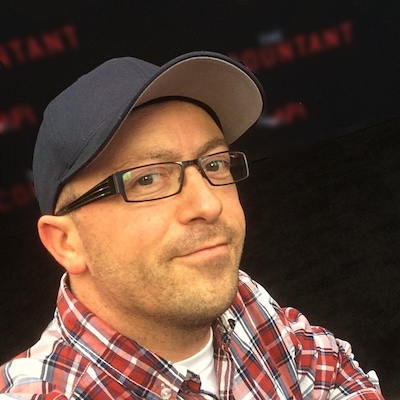Mushroom Couture: “Wicked” Costume Designer Paul Tazewell on Drawing Inspiration From the Natural World
Few films this year showcase intricate detail and epic scale like director Jon M. Chu’s Wicked does. The breathtaking costuming created by acclaimed costume designer Paul Tazewell is a vital element of the filmmaker’s captivating vision.
Wicked, a prequel to The Wizard of Oz, is inspired by the long-running stage show based on Gregory Maguire’s 1995 titular novel. Cynthia Erivo plays Elphaba, a misunderstood green-skinned woman opposite Ariana Grande’s popular girl, Glinda. The pair become friends at Oz’s Shiz University, but when their paths lead them to the Wonderful Wizard of Oz, their friendship is tested. The ensemble cast includes Jonathan Bailey, Michelle Yeoh, and Jeff Goldblum. Wicked lands in theaters on Friday, November 22, 2024.
Here, Tazewell, who was nominated for an Oscar for his work on Steven Spielberg’s West Side Story, breaks down the sartorial storytelling journey he embarked on and how artisans in the UK, where Wicked was filmed, helped take it to a fantastical new level.
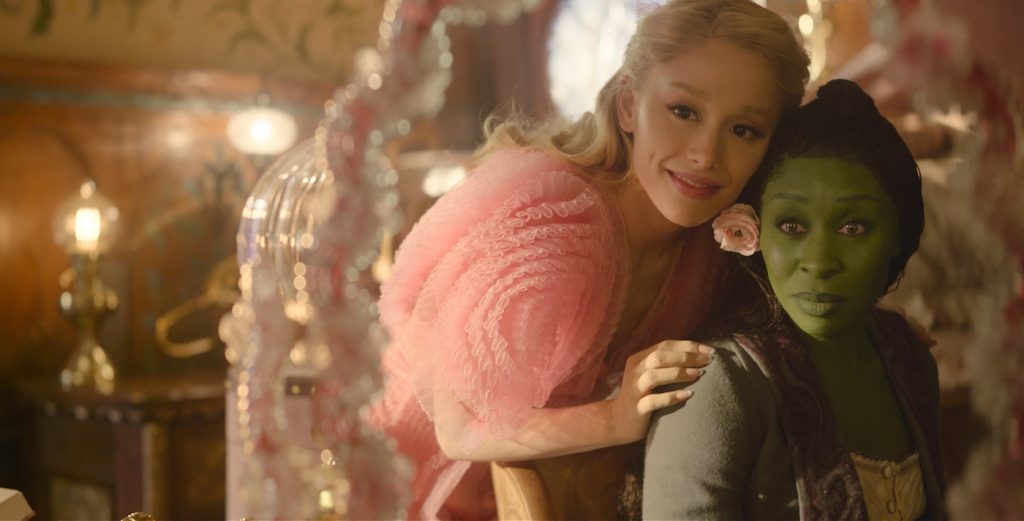
What were the first conversations that you had with Jon, the director?
The Wicked Broadway musical has a huge fan base, but it was important for Jon to tell the story with a new vision and have an original idea about what this world is and how it operates. We also looked at the overall meta culture of The Wizard of Oz, at the illustrations from the bound book, and the 1930s film. I went to nature as a major design influence, including things such as the Fibonacci spiral and how nature creates patterns that can be very kaleidoscopic. Some of the investigations took me to the world of fungus and mushrooms, dried leaves and bark, and that was exciting because nature is periodless. The original Oz book was written at the turn of the century, and there are qualities that are reflected in the design that hearken to that but then explode in a different way. If you think about the 1930s film, it does that in a similar fashion. When you’re in Munchkinland, you’re in this folky 19th-century fantasy land, and you understand the silhouettes, but it’s also made up. I thought that would also be true for how we were going to see the world of Oz.
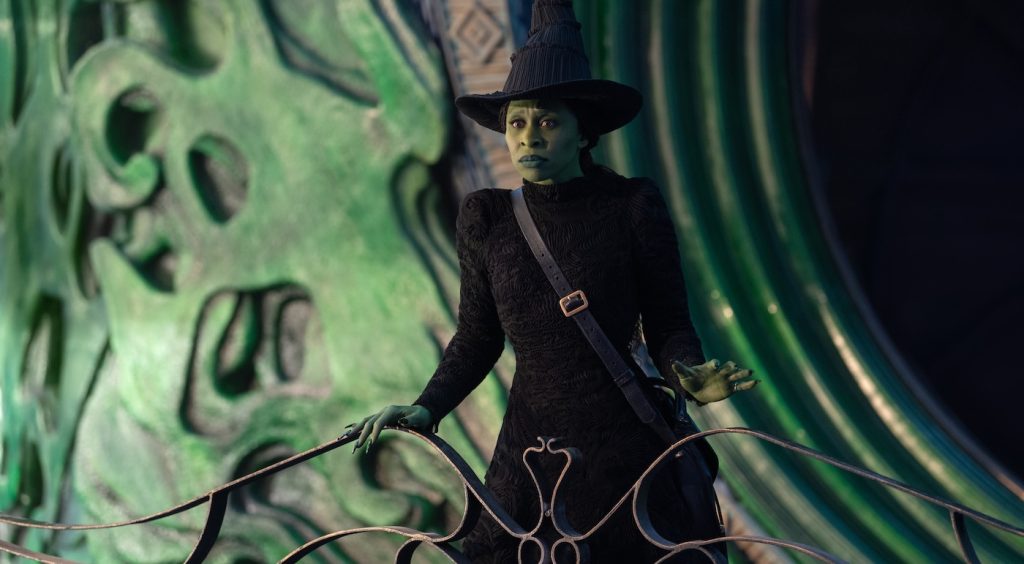
A lot of that comes across in the texture of the fabrics as much as the colors. Is it easier to get that across in film than with stage costuming?
You can’t do it as directly on stage. The benefit of film is you can get up close and see all of what we put in and the beauty the artisans in the UK were able to create. It’s also my love and point of view. That’s how I see creating clothing, whether it’s period detail or detail that is represented by embroidery and imagery that speaks to the character. The textures on Elphaba reflect the idea of mushrooms that audiences subconsciously see, and they can put together that connection to the Earth and animals. I wanted everything she wore to be beautiful, seen as very thoughtful of who she was, and a woman of style, but it just happens that black is her chosen color palette.
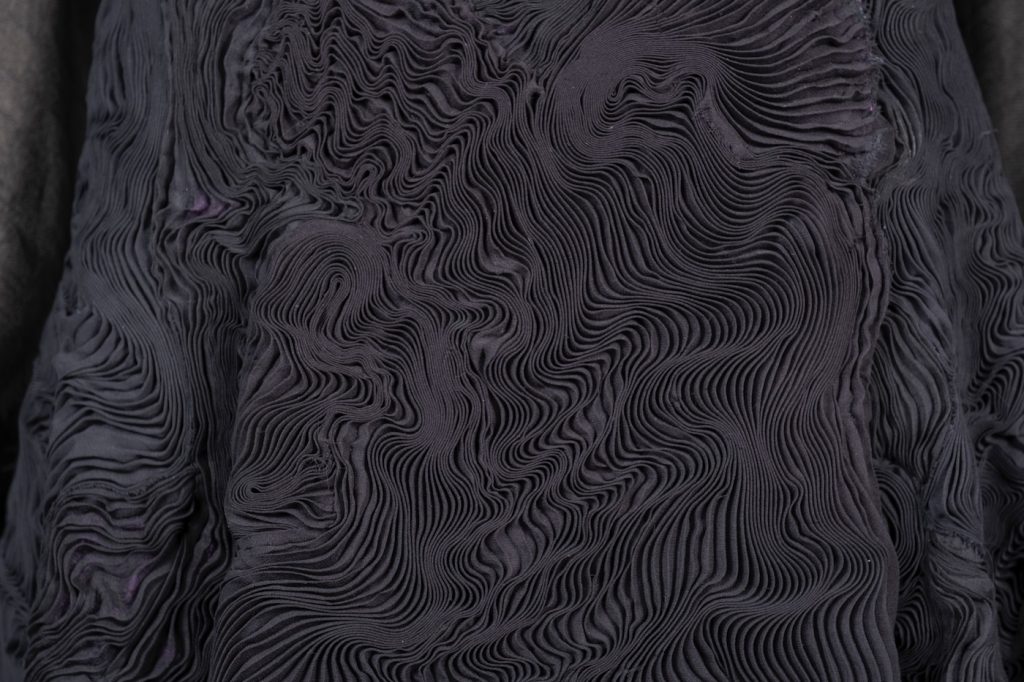
Wicked was filmed in the UK, which has a rich costuming heritage. What was your experience working with local vendors and talent?
One of the benefits of filming in London was that there are makers who still exist and are doing hand work; they are weavers, shoemakers, and embroiderers for both the entertainment industry and the maker industry overall. Some of the artisans in the UK are more privately owned, and they’re smaller shops. I’d say there is more intimacy around how things are created. In the States, there are Broadway costume shops that do fantastic work, and I use them all the time, but it’s a different experience.
You mentioned shoes, and Cynthia wanted her heel size to increase throughout Elphaba’s journey. You have worked with her before, and she loves participating in the creative process.
We collaborate really beautifully together. That was one thing Cynthia brought into the development of who Elphaba was going to be. I can sit down and draw how I imagine Elphaba, show that to the director and the producers, and we can all agree it’s the right way to go, but until I’m folding in the actor and their input, it doesn’t have the same kind of life. Cynthia was always thinking about how she would create this character and make her real for audiences, which is exciting for me. Getting it right for her is super important because I’m relying on her to bring my work to life.
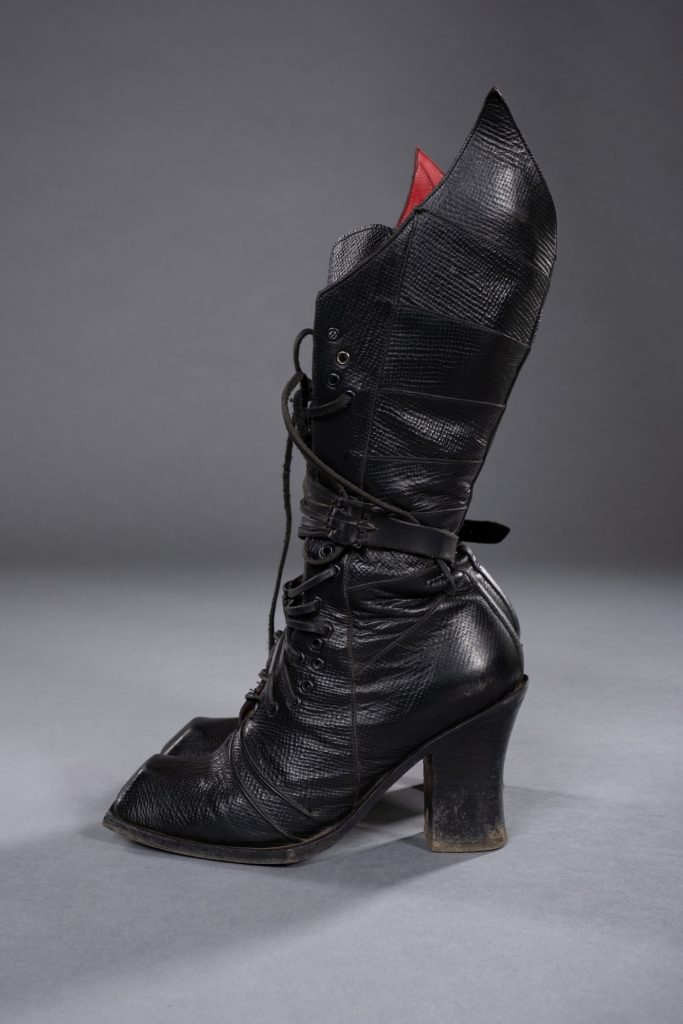
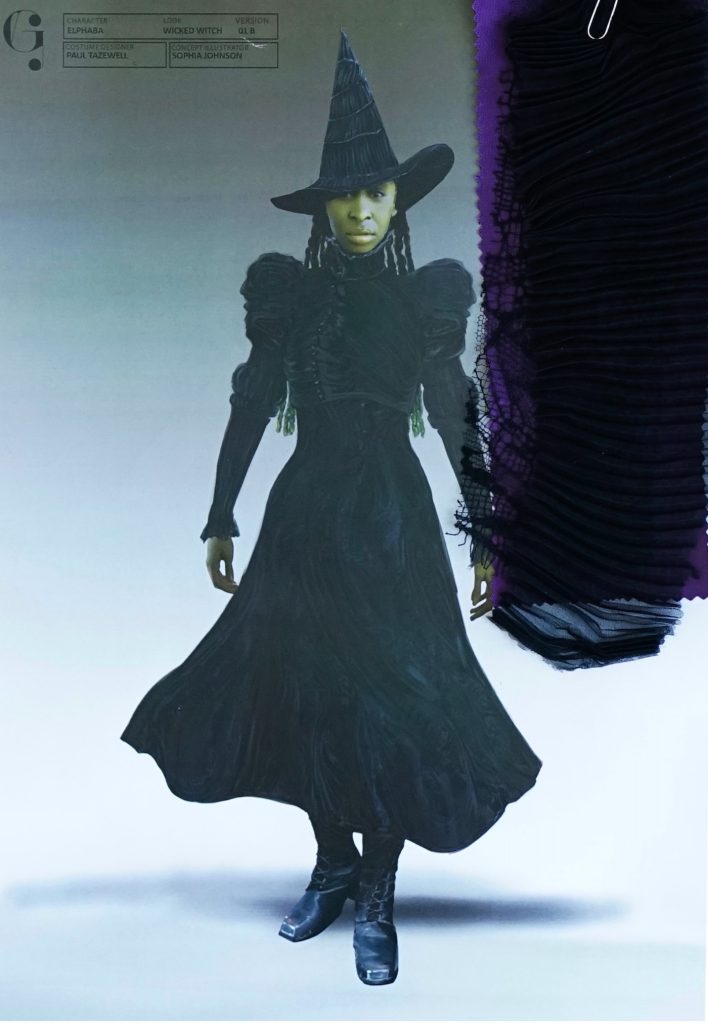
The dresses have to be practical, create a silhouette, and look incredible. I imagine structure is key.
Absolutely. One of my strengths as a costume designer is knowing and understanding how to build costumes. What excites me is collaborating with the tailor to actively make that happen. I tend to be hands-on in the research and development of things like the Bubble dress. I compare that one to a Charles James or Christian Dior dress from the 40s or 50s. When you look at the understructure, there are all kinds of engineering going on that you never see arriving at the shape that is the heart of the garment. It’s like the girdering that you have in a building. I am also aware of how this will feel on the actor, how they will wear it, and what we need to give them support-wise for it to be as comfortable as possible. We had ten or sometimes 16-hour days of shooting, and you can’t exhaust them by creating something too heavy to wear. I am also always mindful of how it will move through space. I’m very aware of how it becomes an extension of the body and being in control of how I want it to move. That informs what the pattern pieces will look like, allowing a skirt to swirl a certain way or what wool I want to use for a suit. I wanted those to fit more like a 19th-century uniform than a modern suit on the street.
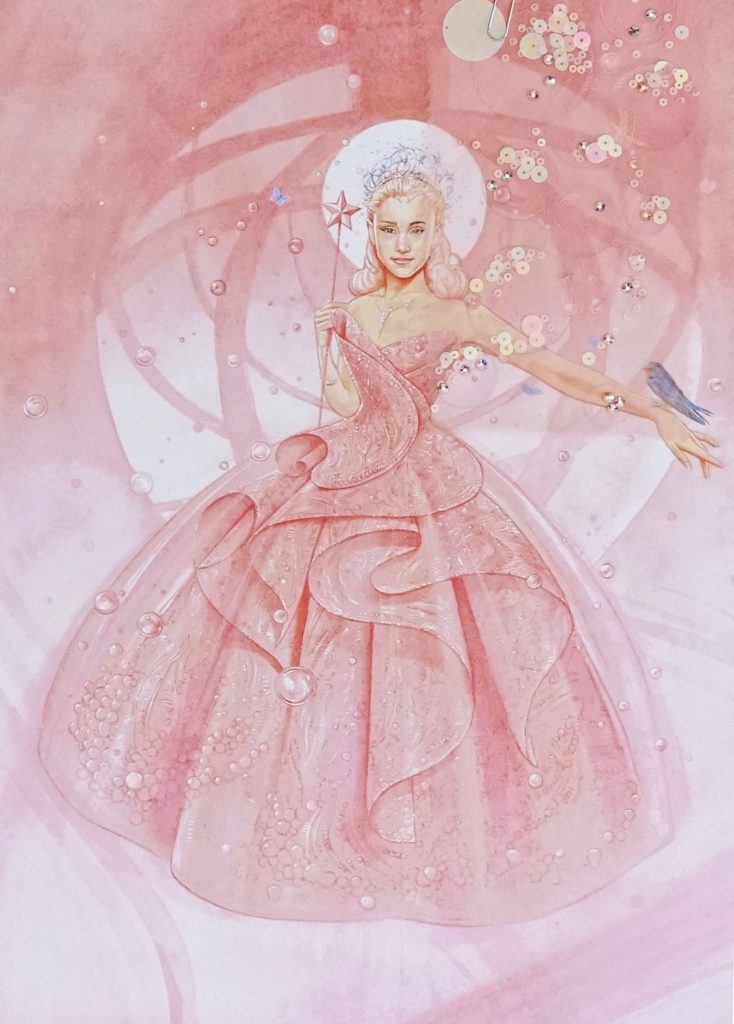
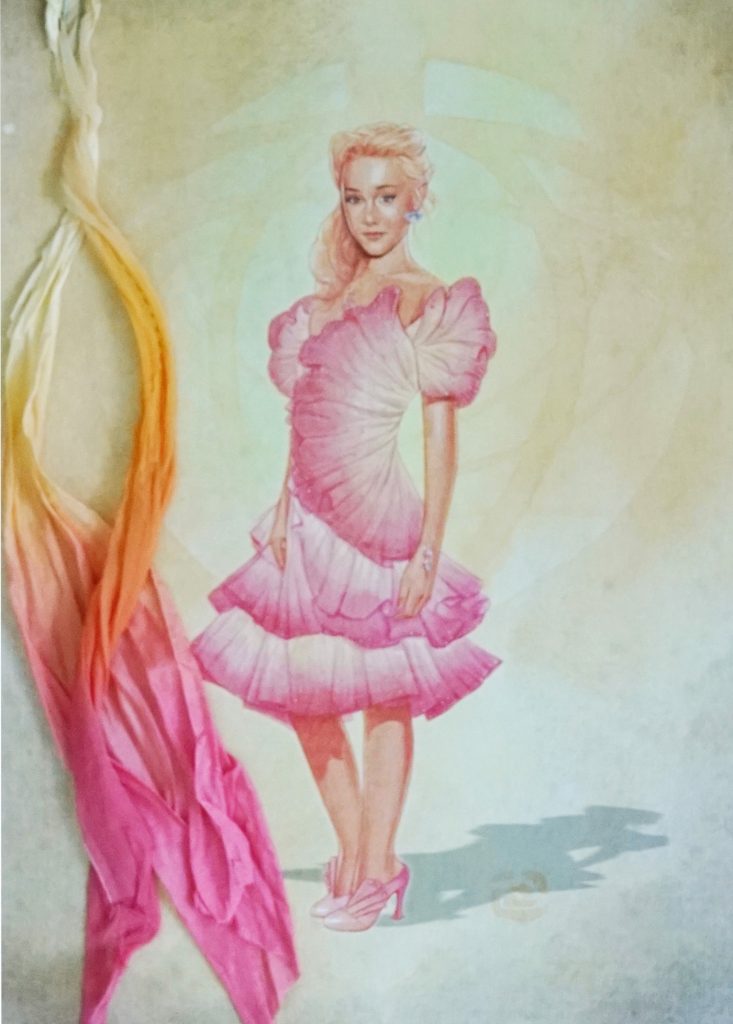
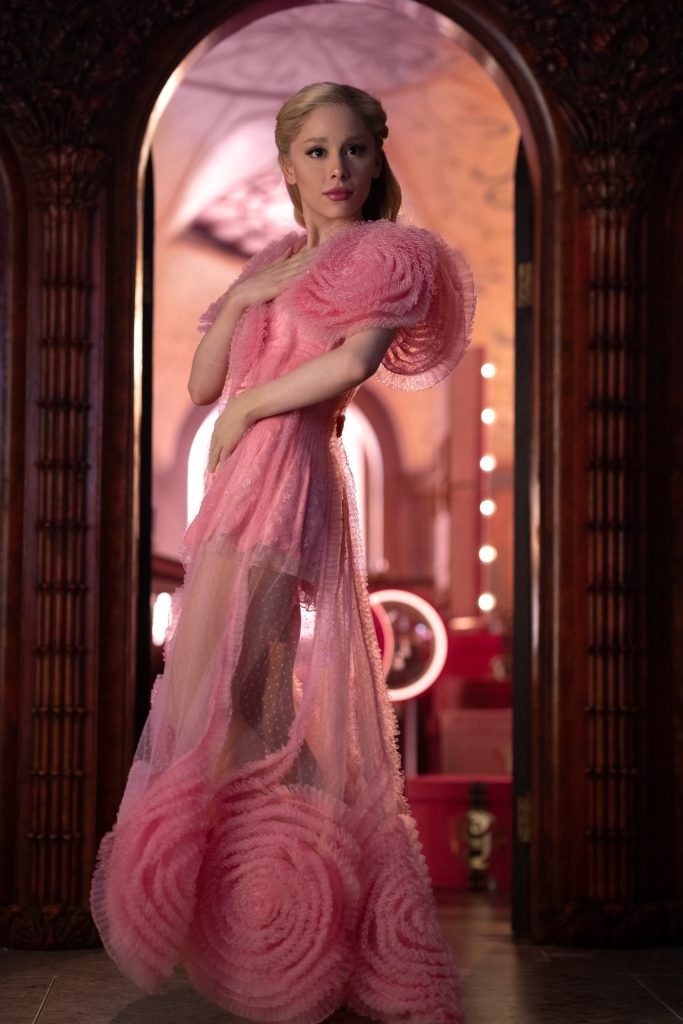
Ariana Grande is a pop icon with serenity and presence; Michelle Yeoh is this incredibly experienced actress with grace; then you’ve got Jeff Goldblum, who has an eccentricity, and Jonathan Bailey, who has that background in the stage world as well. What did they bring to the table?
It was a close and intimate experience for each of them. It was filmed over so much time, so we were constantly in fittings, especially with Arianna and Cynthia. As well as being on set, we averaged three to four fittings a week so that we could prepare for the next month of filming. Michelle, Jonathan, and Jeff all brought a sense of style that they walk through life with. They wear clothes beautifully, and clothing is important for each of them, so it was important to acknowledge that, as well as interpret who these characters are. They know designers and what looks good on them, and that’s golden for me. I want somebody to value what I bring and have the conversations so I can make it the best that it can be.
This is the first of two Wicked films. How did you balance not putting everything into the costuming in the first movie so that you had somewhere fresh to go?
When we were conceiving this world and how we wanted to tell the story, I had to figure out what the whole journey would be. I am always thinking about the emotional arc for each character and where we end up. I had a good sense of where we were going, and I had already slotted in the looks all the way through to the end of the second film. That’s not to say that things didn’t shift and change as we moved through them, but certain things stayed exactly the same because they needed to hit certain marks within the story. We were shooting scenes from the first film in the same week as we were shooting scenes from the second film. There was no choice but to make all those decisions at the front end.
How many costumes did you have to make, and how did you scale that?
I had an amazing team and partner in crime who oversaw, approved, and budgeted everything, ensuring we had enough people on our team and money in our coffers to do what we wanted and needed to do. She was instrumental in pulling together all the artisans I talked about under one roof. Some she had worked with before, others she had heard about, and collectively, we were this Santa’s factory creating this film for a year and a half. We also had the pre-production months, but it was a magical and active space during that whole time. I would say we created 25 looks for Glinda, about the same for Elphaba, and multiples of those. We then had to create multiples for stunts and covers. Hundreds and hundreds of costumes were created for our main cast and day players. There were also background people so we could fill the huge spaces that production designer Nathan Crowley created for Emerald City, all of Shiz and Munchkinland, and all of the guests at the wedding, which you’ll see in the second film. It was full-on. I stepped off the plane in London and was constantly running, but I was in my blissful space.
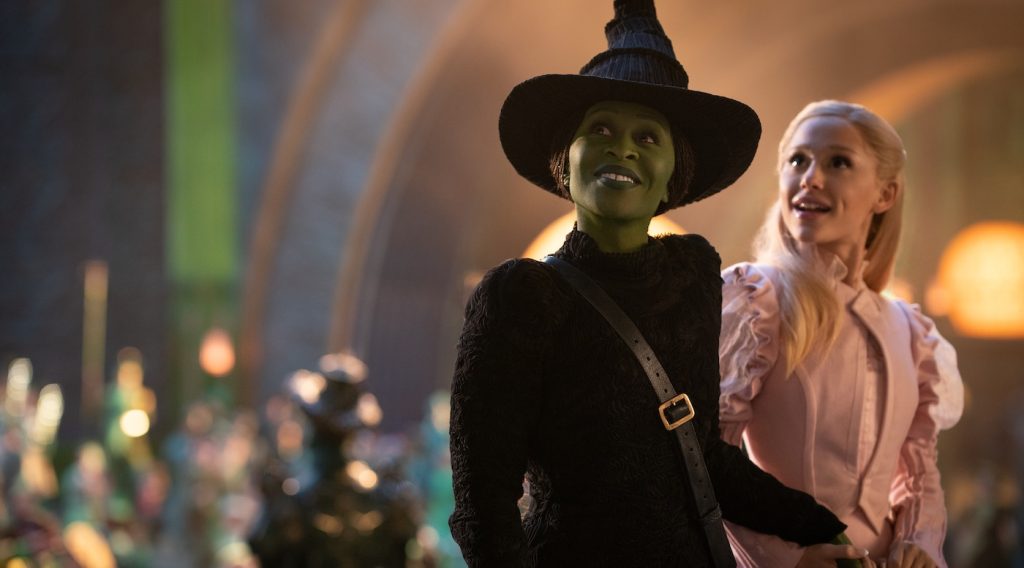
Wicked lands in theaters on Friday, November 22, 2024.


